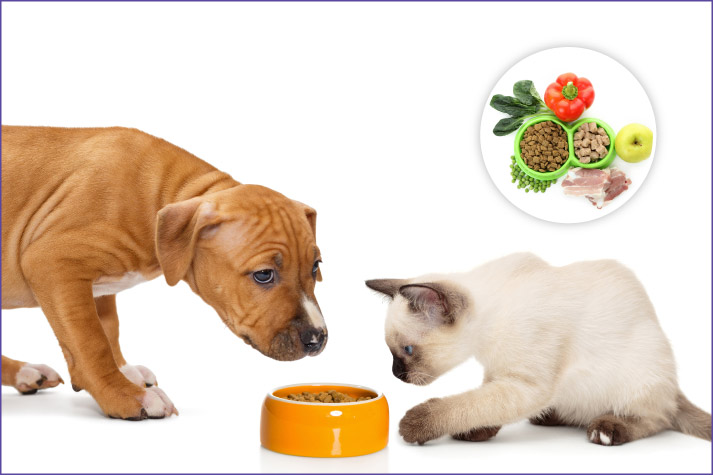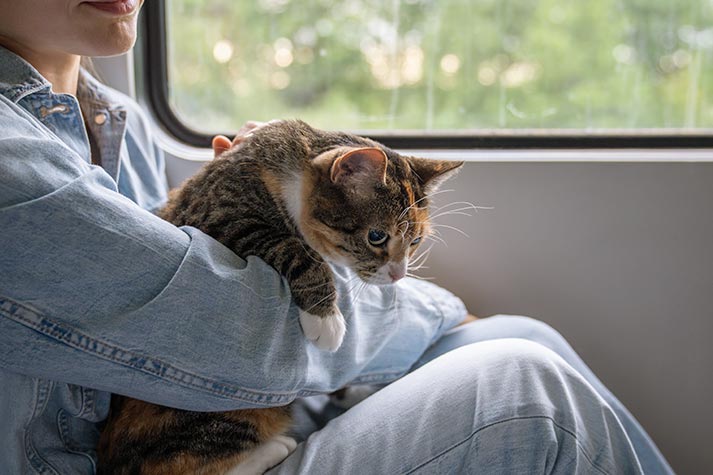
15 Jul
Nutrition Basics: Feeding Your Pet for Optimal Health
As pet parents, choosing a suitable diet for our pets is among the most important aspects of pet ownership. Nutrition and diet play a huge role in a pet’s health and well-being, necessary for proper growth and development throughout their life. Since diet and health are closely related, we have compiled a few tips to choose the right food for your pet.
Here’s How to Choose the Best Food for Your Pets
Different Nutritional Needs: Cats and Dogs
Dogs need a well-rounded diet since they are omnivores, with foods that are rich in proteins, vitamins, and minerals.
Here's what a dog’s diet should include:
- Proteins: Vital for healthy growth, maintenance, and tissue repair.
- Fats: Provide energy and aid in vitamin absorption.
- Carbohydrates: Offer energy and fiber, though not essential.
- Vitamins and Minerals: Necessary for various bodily functions.
The Nutritional Needs of Cats
Cats are strict carnivores, meaning their diet must mostly consist of meat.
Here’s what their dietary needs include:
- High Protein: Crucial for energy, growth, and bodily functions.
- Taurine: An amino acid only found in animal proteins.
- Fats: Important for energy and overall health.
- Vitamins and Minerals: Especially Vitamins A and certain vitamin B’s that cats can't produce on their own.
Choosing the Right Food: Quality Matters
When picking food for your pet, prioritize quality. Choose products listing real meat, fish, or poultry as the first ingredient. Ensure the food is balanced, offering all necessary nutrients in the right direction. Choose reputable brands recommended by your veterinarian, as such brands will have high nutritional content with minimal filler.
Special Dietary Needs
Pets with health issues such as allergies, obesity, or chronic conditions like kidney disease or diabetes require special diets. Consult your veterinarian to find the best diet for your pet’s specific needs.
Reading Pet Food Labels
Understanding pet food labels is key. Here are a few things to look out for:
- Named Protein Sources: Specific proteins like "chicken" or "beef" instead of generic terms like "meat".
- Whole Foods: Ingredients like fruits, vegetables, and grains for better health.
- By-Products and Fillers: Avoid foods with excessive by-products and fillers.
- Artificial Additives: Steer clear of artificial colors, flavors, or preservatives.
Home-Cooked vs. Store-Bought Pet Food
Home-cooked meals can be healthy for pets but require careful planning to meet all nutritional needs. Store-bought pet foods are designed to be nutritionally complete. If considering home-cooked diets, consult a veterinary nutritionist first.
What is Mixed Feeding for Pets?
Mixed feeding, alternatively known as combination feeding, is the mixing of both wet and dry foods in your pet’s diet. Wet or ‘canned’ food has a higher moisture content, is flavourful, and easier to chew & digest by pets compared to dry food. Dry food, by contrast, has the convenience benefit of being ready-to-serve, and can be served easily at home. or on the road during It is also easy to store, economical, and helps a pet’s dental health, which can be major plus points if you’re someone who embarks on domestic pet travel frequently. Both types of feed have their own advantages, which can be further highlighted when combining the two.
Mixing your pets feed provides the benefits of both, if you measure out the servings you give your pet, to prevent overeating and obesity. Remember to always keep your pet’s needs in mind when choosing any diet of food or diet for them. Prior to starting a mixed feeding diet, consult your vet and find out about your pets daily calorific and nutritional intake, so you can calculate what proportion of wet and dry feed to mix.
Nutritional Supplements
Some pets may need supplements to address deficiencies or health issues. Always consult your vet before adding supplements to your pet’s diet, as too much can be harmful.
To conclude, while a balanced diet may seem like a massive change, the reality is you’ll have no trouble once you implement the diet itself. Remember to visit your vet with your pet, and once you have a portion size you can measure out for each meal, stick to it. Healthier treats can supplement your pet’s healthier diet and help prevent obesity, and for pet owners, it is our responsibility to do right by our pets. If your pet is a fussy eater or if you embark on frequent pet travel, you can try mixed feeding for an adequate food intake.






AUTHOR’S BIO
Carry My Pet
Passionate pet enthusiasts and globetrotters, dedicated to easing furry friends' journeys worldwide. Penning tales of compassion at CarryMyPet, where every relocation is a tail-wagging adventure.